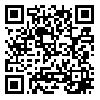Volume 51, Issue 2 And 3 (1 1993)
Tehran Univ Med J 1993, 51(2 And 3): 8-12 |
Back to browse issues page
Download citation:
BibTeX | RIS | EndNote | Medlars | ProCite | Reference Manager | RefWorks
Send citation to:



BibTeX | RIS | EndNote | Medlars | ProCite | Reference Manager | RefWorks
Send citation to:
Ghavamzadeh A, Bayboordi I. Bone marrow transplantation in patients with Thalassemia. Tehran Univ Med J 1993; 51 (2 and 3) :8-12
URL: http://tumj.tums.ac.ir/article-1-1732-en.html
URL: http://tumj.tums.ac.ir/article-1-1732-en.html
Abstract: (18879 Views)
During April, 1991 and September, 1993, eighteen patients with major thalassemia admitted to Shariati BMT center. Seventeen patients were transplanted were from HLA identical siblings and one from. his HLA identical father. Eleven of the donors were the known cases of minor thalassemia. The range of patients' age was within 3-10 years (with the average of 5 years and 11 months). Among them, seven patients were male and eleven were female. As the other international BMT centers, we classified our patients into three classes. Our criteria for this classification were hepatomegaly, ferretin, and liver fibrous 60% of our patients were put in class I and 40% in class II. All of our patients revealed a GVHD (severe graft vs. host disease) three weeks post-BMT as pruritus, diarrhea, and skin erythema especially in hands and feet. Two of the patients showed severe GVHD. One of the patients had chimerism after BMT. Although one year after BMT has passed, the patients is still depended on blood transfusion. One patient, despite graft rejection, died nine months post-BMT another one died after +70 due to GVHD. During 2.5 years, the overall graft survival rate was 88% in our center
| Rights and permissions | |
 |
This work is licensed under a Creative Commons Attribution-NonCommercial 4.0 International License. |





